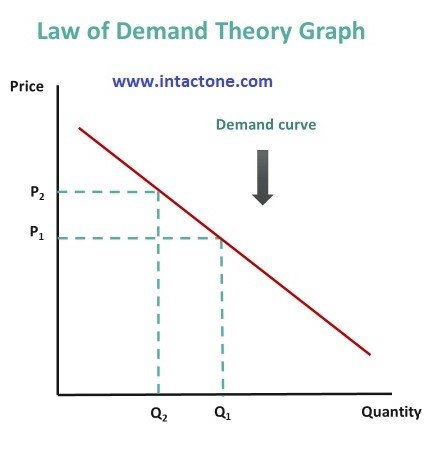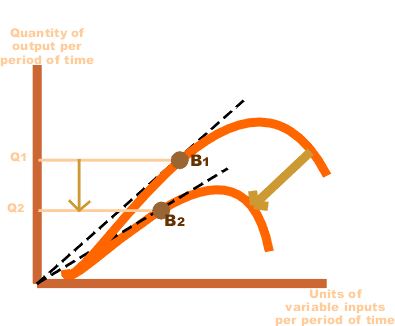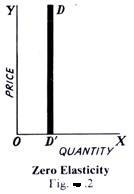Leadership theories explore the factors that contribute to effective leadership and how leaders can motivate their followers to achieve organizational goals. These theories provide various perspectives and are classified into several types, each highlighting different aspects of leadership behavior and effectiveness.
Trait Theories:
These theories suggest that effective leaders share a common set of traits or characteristics that distinguish them from non-leaders. Examples of such traits include intelligence, assertiveness, adaptability, and charisma. Trait theories focus on identifying these inherent qualities that theoretically predict leader effectiveness.
Features of Trait Theories:
- Focus on Personal Characteristics:
Trait theories emphasize inherent personal attributes, suggesting that leaders are born, not made. They identify specific traits such as intelligence, confidence, charisma, integrity, and sociability as critical to effective leadership.
These theories often imply that the traits that make an effective leader are universal and that these traits are effective in different leadership scenarios, regardless of the organizational context or country. This universality concept has been both supported and criticized in various studies.
Trait theories often attempt to measure leadership effectiveness through quantifiable psychological attributes. This quantitative approach allows for more empirical research and studies to identify and assess these traits, typically through psychological tests and assessments.
One of the primary goals of trait theories is to predict leadership success based on the presence of certain traits. The assumption is that identifying and measuring the right traits can predict potential leadership effectiveness and success.
Trait theories assume that leadership traits are relatively stable over time and are enduring qualities of an individual. This stability implies that once a leader, always a leader, as these traits do not change significantly throughout one’s life.
Behavioral Theories:
Behavioral theories focus on the actions of leaders rather than their mental qualities or internal states. These theories categorize leaders based on specific behaviors and styles. Examples include democratic leadership, where leaders involve team members in decision-making, and autocratic leadership, where leaders make decisions without input from others.
Characteristics of Behavioral Theories:
Behavioral theories focus on what leaders do, rather than who they are. This approach looks at specific behaviors that can be observed, taught, and learned, making it more practical for training and development purposes. These actions include how leaders handle tasks, interact with followers, and make decisions.
A significant aspect of behavioral theories is the classification of leadership into styles based on observed behaviors. Commonly, leadership styles are divided into categories like autocratic, democratic (participative), and laissez-faire, each defined by specific behavioral patterns that influence how leaders direct and support their followers.
These theories suggest that leadership is a skill that can be developed through education and experience. It posits that with the right training and exposure to appropriate role models, most people can learn to lead effectively by adopting effective leadership behaviors.
Behavioral theories recognize that effective leadership behaviors can vary depending on the situation and the needs of the followers. Leaders may need to adapt their style to different circumstances, suggesting a more flexible approach to leadership compared to the fixed trait perspective.
Behavioral theories have had a profound impact on leadership development programs. They have led to the creation of numerous training models that focus on enhancing specific leadership behaviors, such as communication, motivation, and conflict resolution. These theories underpin many of the modern practices in organizational leadership development.
Contingency Theories:
These theories propose that the effectiveness of a leadership style is contingent upon the context and situational factors. Leadership success depends on various elements, including the organizational environment, team characteristics, and task types. Famous models include Fiedler’s Contingency Model, which links the leader’s effectiveness to situational controllability.
Characteristics of Contingency Theories:
The central tenet of contingency theories is that leadership success depends on the alignment between a leader’s style, the followers’ needs, and the specific situational variables. This characteristic highlights the necessity for leaders to adapt their style to fit the particular circumstances and demands of the environment and task.
A key aspect of contingency theories is the quality of the relationship between the leader and their followers. Good leader-member relations can enhance leadership effectiveness, while poor relations might hinder a leader’s ability to lead effectively, regardless of their inherent abilities or leadership style.
Contingency theories often consider the structure of the tasks to be performed, categorizing them as either high or low in clarity and structure. The theory posits that different leadership styles are more effective depending on whether the task at hand is structured or unstructured.
The amount of power and authority a leader holds can significantly impact their effectiveness. This includes the power to hire, fire, reward, and punish. Contingency theories examine how a leader’s control over these elements affects their ability to lead effectively.
Leaders who embrace contingency theories must be flexible and adaptable in their leadership approach. They need to assess continuously and accurately the demands of their particular situation and adapt their leadership style accordingly. This adaptability is crucial for effectively leading under varying conditions.
Transactional Leadership Theories:
Transactional leadership is based on a system of rewards and penalties. Leaders and followers have a series of transactions: leaders offer rewards for productivity or penalties for lack of productivity. This theory is useful in understanding compliance and operational environments.
Characteristics of Transactional Leadership Theories:
Transactional leadership relies heavily on extrinsic motivators, such as rewards and punishments, to influence follower behavior. This approach assumes that people are motivated by reward and punishment and that social systems work best with a clear chain of command.
In transactional leadership, rewards and punishments are contingent upon performance. Rewards are given for meeting or exceeding targets, and disciplinary measures are implemented for failing to meet agreed-upon standards. This conditionality ensures that followers are directly accountable for their actions.
Leaders focus on task completion and employee compliance and tend to be highly directive. Transactional leaders set clear goals and provide necessary resources but expect staff to perform their tasks with little oversight beyond structured monitoring and feedback on specific outcomes.
Transactional leaders often operate on a management by exception basis, intervening only when standards are not met or when the performance deviates from the set expectations. This approach can lead to efficient management, as leaders do not involve themselves in day-to-day activities that are going according to plan.
This leadership style thrives on rigid structures and prefers to operate within established processes and procedures. Transactional leaders enforce organizational rules rigidly, which can ensure a stable environment that may enhance productivity for tasks requiring high levels of consistency.
Transformational Leadership Theories:
Transformational leaders inspire followers to exceed their own self-interests for the good of the organization and can have a profound and extraordinary effect on their followers. They typically exhibit behaviors that motivate and inspire those around them by establishing trust and setting high expectations.
Characteristics of Transformational Leadership Theories:
Transformational leaders have a unique ability to inspire and motivate followers by providing meaning and challenge to their work. They articulate a clear vision and are enthusiastic about the goals and missions of the organization. This charisma often translates into an infectious energy that drives the entire team towards achieving higher goals.
Leaders who adopt this style encourage innovation and creativity through challenging the usual ways of doing things and encouraging followers to explore new ways of solving problems. Intellectual stimulation is about pushing team members to question norms and to think critically and independently, which can lead to innovations that benefit the entire organization.
Transformational leaders pay attention to the needs of each follower, acting as a mentor or coach. This characteristic involves open communication to foster supportive relationships and to help followers develop and reach higher levels of achievement. Individualized consideration helps in recognizing the unique talents and contributions of each team member, which enhances personal growth and satisfaction.
These leaders act as role models for their followers. Through their ethical behavior and personal actions, they earn the trust and respect of their team. Idealized influence is characterized by high standards of moral and ethical conduct, which sets a positive example for followers to emulate.
Transformational leaders are predominantly focused on the future, striving to lead changes that achieve long-term success and sustainability. They have a compelling vision for the future of the organization, and they communicate this vision effectively to align and motivate all members of the organization to work towards this common goal.
Servant Leadership Theory:
This theory suggests that the leader’s primary role is to serve others. Servant leaders prioritize the needs of their team members and help them perform as highly as possible. Unlike traditional leadership theories that focus on the end results, servant leadership emphasizes the growth and well-being of people and communities.
Characteristics of Servant Leadership Theory:
Servant leaders prioritize understanding and empathizing with their followers. They strive to acknowledge their team members’ perspectives and feelings, which helps in building trust and a supportive team environment. This deep understanding aids in tailoring leadership actions to the specific needs and potentials of individual team members.
Servant leaders are deeply committed to the growth of each individual within the organization. They nurture personal and professional development, providing opportunities for learning and advancement. This approach not only improves the skills and capabilities of team members but also contributes to their personal satisfaction and loyalty.
A hallmark of servant leadership is active and attentive listening. Servant leaders listen to the needs, concerns, and suggestions of their followers with an open mind. This practice is essential for understanding issues fully and fostering an inclusive atmosphere where every voice is valued.
Servant leaders also take responsibility for their role as stewards of the organization and its resources, including human capital. They focus on making decisions that are ethical and benefit not only the organization but also the wider community and environment. This responsibility underscores a commitment to a higher purpose beyond profit or personal gain.
This leadership style emphasizes the importance of fostering a strong sense of community within the organization. Servant leaders work towards creating an environment where team members feel connected, supported, and part of a cohesive group. This sense of community enhances collaboration and can lead to higher levels of organizational commitment and effectiveness.
Situational Leadership Theory:
Developed by Paul Hersey and Ken Blanchard, this theory suggests that no single leadership style is best. Instead, it depends on the situation. Leaders must adapt their style to the performance readiness of their followers, which could be a mix of directive and supportive behaviors.
Characteristics of Situational Leadership Theory:
One of the most critical attributes of situational leadership is adaptability. Leaders assess the situation and adapt their style to meet the needs of their followers. This flexibility is crucial in managing a dynamic work environment where team members’ competence and commitment levels can vary widely.
Situational leadership categorizes leadership styles into four types: Directing (high directive, low supportive), Coaching (high directive, high supportive), Supporting (low directive, high supportive), and Delegating (low directive, low supportive). Each style is used based on the specific needs of the situation and the development level of the followers.
Leaders must evaluate the development level of their followers, which is a combination of their competence and motivation. This assessment dictates the leadership style chosen. For example, a new employee might need a more directive style (Directing), whereas a more experienced and motivated employee might benefit more from a delegating style.
Situational leadership heavily relies on open, two-way communication between leaders and followers. This ensures that leaders can gauge followers’ development levels accurately and that followers understand what is expected of them. It also helps in providing appropriate feedback and support tailored to individual needs.
Unlike traditional leadership theories that focus primarily on achieving tasks, situational leadership places significant emphasis on the development of followers. Leaders take on more of a teaching or coaching role, aimed at developing employees’ skills and helping them progress to higher levels of autonomy and responsibility.
Path-Goal Theory:
This theory is about how leaders motivate subordinates to accomplish designated goals. The leader’s job is seen as coaching or guiding workers to choose the best paths for reaching their goals. Based on the expectancy theory of motivation, leaders should clarify the path to help their followers achieve career goals.
Characteristics of Path-Goal Theory:
Similar to situational leadership, Path-Goal Theory emphasizes the importance of adapting leader behavior based on the environment and the employees’ needs. Leaders can adopt different styles, such as directive, supportive, participative, and achievement-oriented, depending on what is most needed to help followers feel satisfied and perform effectively.
Leaders using this model actively clarify and define how followers can achieve their objectives. This involves outlining clear guidelines, providing direction, and setting performance standards. Leaders also help identify and remove barriers that might impede progress, thereby easing the path towards goal achievement.
Path-Goal Theory asserts that leaders can motivate their followers by increasing the rewards that directly result from performance. This means linking performance to outcomes that are valuable to the follower, ensuring that they see a clear connection between their effort and the rewards they can obtain.
The theory takes into account the characteristics of the employees (such as their locus of control, experience, and perceived ability) and the environmental factors (such as the task structure, work group, and authority system). Leaders must understand these factors and adjust their style to fit the situation optimally to motivate their followers effectively.
Leaders are seen as facilitators who support their followers by providing them with the necessary resources, guidance, and encouragement. Supportive leadership is crucial in ensuring that employees feel valued and empowered to take necessary actions towards achieving their goals.
Like this:
Like Loading...





